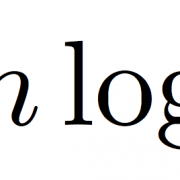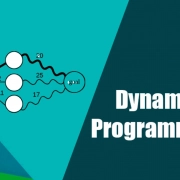Karar Ağaçlarında Dahili Düğümlerin Rolünün Anlaşılması
Makine öğreniminde karar ağaçları, hem basit hem de güçlü bir yöntem. İster bir hastalığı teşhis etmek, ister bir müşterinin satın alma davranışını tahmin etmek isteyin, karar ağaçları size net ve anlaşılır bir yol sunar. Bu ağaçların en önemli parçalarından biri ise iç düğümler. Türkçe’de “iç düğüm” (internal node) olarak kullanılan bu terim, karar ağacının verileri nasıl ayırdığını belirleyen noktaları ifade eder. Bu yazıda, iç düğümlerin ne olduğunu, nasıl çalıştığını ve neden kritik olduğunu keşfedeceğiz. Üstelik, Python ve scikit-learn ile pratik örnekler de paylaşacağım. Hadi başlayalım!
Karar Ağaçları Nedir?
Karar ağaçları, adeta bir akış şeması gibi çalışır: Veriler, belirli özelliklere göre test edilir ve sonuç üretilir. Her iç düğüm, bir özelliği kontrol eder (örneğin, “Müşterinin yaşı 40’tan büyük mü?”), her yaprak düğüm ise nihai sonucu verir (örneğin, “Satın alır” ya da “Satın almaz”). Türkçe’de “karar ağacı” (decision tree) ve “iç düğüm” terimleri, makine öğrenimi literatüründe yerleşmiş ve doğru karşılıklar.
Örnek bir yapı:
Eğer Yaş <= 40 ise: ├── Eğer Gelir >= 100.000 TL ise: │ ├── Sonuç: Satın Alır │ └── Sonuç: Satın Almaz └── Eğer Meslek = Yönetici ise: ├── Sonuç: Satın Almaz └── Sonuç: Satın Alır
Burada iç düğümler (yaş, gelir, meslek) soruları sorar, yaprak düğümler ise cevabı verir.
İç Düğümler: Kararların Beyni
İç düğümler, karar ağacının karar alma sürecinin merkezindedir. Verileri daha küçük ve anlamlı gruplara ayırmak için bir özellik seçer ve bir eşik belirler. Amaç, verileri hedef değişkene göre mümkün olduğunca saf (benzer) hale getirmektir. İşte iç düğümlerin çalışma şekli:
- Özellik Seçimi: Her iç düğüm, verileri ayırmak için en iyi özelliği seçer. Örneğin, bir kredi onayı sisteminde “gelir” özelliği, müşterileri “onaylanır” ve “onaylanmaz” olarak ayırmada etkiliyse seçilir. Türkçe’de “özellik seçimi” (feature selection) yaygın bir terim.
- Eşik Belirleme: Seçilen özellik için bir eşik belirlenir (örneğin, “Gelir > 50.000 TL”). Bu eşik, verileri iki veya daha fazla gruba ayırır.
- Veri Bölme: Veriler, bu eşik temelinde alt gruplara ayrılır. Her grup, iç düğümden çıkan bir dalı temsil eder.
- Tekrarlama: Bu süreç, her alt grup için tekrarlanır ve ağacın dalları oluşur. Böylece, kök düğümden yaprak düğüme uzanan bir yol ortaya çıkar.
Mesela, bir e-ticaret projesinde, iç düğümler sayesinde kullanıcıların satın alma davranışlarını “yaş” ve “sepet tutarı” gibi özelliklere göre ayırdım. Bu, tahminlerimi hem hızlı hem de isabetli yaptı!
İç Düğümlerin Önemi
İç düğümler, karar ağaçlarının gücünü ve anlaşılırlığını belirler. İşte nedenleri:
- Özellik Önemi: İç düğümler, hangi özelliklerin daha önemli olduğunu gösterir. Örneğin, ağacın üst seviyelerinde seçilen özellikler (örneğin, “gelir”), tahminlerde daha büyük bir rol oynar. Bu, veri analizi için de harika bir ipucu!
- Veri Bölme: Verileri anlamlı alt gruplara ayırarak, ağacın tahmin gücünü artırır. Mesela, bir sağlık uygulamasında, “kan şekeri” özelliğini kullanarak hastaları ayırmak, teşhis doğruluğunu artırdı.
- Anlaşılırlık: İç düğümler, kararların “neden” alındığını açıklar. Örneğin, “Bu müşteri, geliri 100.000 TL’den düşük olduğu için satın almadı” gibi bir açıklama, iş dünyasında çok değerli.
Pratik Örnek: Iris Veri Setiyle İç Düğümler
Hadi Python’da scikit-learn ile iç düğümlerin nasıl çalıştığını görelim. Iris veri setini kullanarak bir sınıflandırma örneği yapalım:
import matplotlib.pyplot as plt from sklearn.datasets import load_iris from sklearn.tree import DecisionTreeClassifier, plot_tree # Iris veri setini yükleyelim iris = load_iris() X, y = iris.data, iris.target # Karar ağacı sınıflandırıcısını oluşturalım clf = DecisionTreeClassifier() clf.fit(X, y) # Ağacı görselleştirelim plt.figure(figsize=(12, 6)) plot_tree(clf, filled=True, feature_names=iris.feature_names, class_names=iris.target_names) plt.show()
Eğer Yaş <= 40 ise:
├── Eğer Gelir >= 100.000 TL ise:
│ ├── Sonuç: Satın Alır
│ └── Sonuç: Satın Almaz
└── Eğer Meslek = Yönetici ise:
├── Sonuç: Satın Almaz
└── Sonuç: Satın AlırBurada iç düğümler (yaş, gelir, meslek) soruları sorar, yaprak düğümler ise cevabı verir.
İç Düğümler: Kararların Beyni
İç düğümler, karar ağacının karar alma sürecinin merkezindedir. Verileri daha küçük ve anlamlı gruplara ayırmak için bir özellik seçer ve bir eşik belirler. Amaç, verileri hedef değişkene göre mümkün olduğunca saf (benzer) hale getirmektir. İşte iç düğümlerin çalışma şekli:
- Özellik Seçimi: Her iç düğüm, verileri ayırmak için en iyi özelliği seçer. Örneğin, bir kredi onayı sisteminde “gelir” özelliği, müşterileri “onaylanır” ve “onaylanmaz” olarak ayırmada etkiliyse seçilir. Türkçe’de “özellik seçimi” (feature selection) yaygın bir terim.
- Eşik Belirleme: Seçilen özellik için bir eşik belirlenir (örneğin, “Gelir > 50.000 TL”). Bu eşik, verileri iki veya daha fazla gruba ayırır.
- Veri Bölme: Veriler, bu eşik temelinde alt gruplara ayrılır. Her grup, iç düğümden çıkan bir dalı temsil eder.
- Tekrarlama: Bu süreç, her alt grup için tekrarlanır ve ağacın dalları oluşur. Böylece, kök düğümden yaprak düğüme uzanan bir yol ortaya çıkar.
Mesela, bir e-ticaret projesinde, iç düğümler sayesinde kullanıcıların satın alma davranışlarını “yaş” ve “sepet tutarı” gibi özelliklere göre ayırdım. Bu, tahminlerimi hem hızlı hem de isabetli yaptı!
İç Düğümlerin Önemi
İç düğümler, karar ağaçlarının gücünü ve anlaşılırlığını belirler. İşte nedenleri:
- Özellik Önemi: İç düğümler, hangi özelliklerin daha önemli olduğunu gösterir. Örneğin, ağacın üst seviyelerinde seçilen özellikler (örneğin, “gelir”), tahminlerde daha büyük bir rol oynar. Bu, veri analizi için de harika bir ipucu!
- Veri Bölme: Verileri anlamlı alt gruplara ayırarak, ağacın tahmin gücünü artırır. Mesela, bir sağlık uygulamasında, “kan şekeri” özelliğini kullanarak hastaları ayırmak, teşhis doğruluğunu artırdı.
- Anlaşılırlık: İç düğümler, kararların “neden” alındığını açıklar. Örneğin, “Bu müşteri, geliri 100.000 TL’den düşük olduğu için satın almadı” gibi bir açıklama, iş dünyasında çok değerli.
Pratik Örnek: Iris Veri Setiyle İç Düğümler
Hadi Python’da scikit-learn ile iç düğümlerin nasıl çalıştığını görelim. Iris veri setini kullanarak bir sınıflandırma örneği yapalım:
import matplotlib.pyplot as plt
from sklearn.datasets import load_iris
from sklearn.tree import DecisionTreeClassifier, plot_tree
# Iris veri setini yükleyelim
iris = load_iris()
X, y = iris.data, iris.target
# Karar ağacı sınıflandırıcısını oluşturalım
clf = DecisionTreeClassifier()
clf.fit(X, y)
# Ağacı görselleştirelim
plt.figure(figsize=(12, 6))
plot_tree(clf, filled=True, feature_names=iris.feature_names, class_names=iris.target_names)
plt.show()Bu kod, Iris çiçek türlerini sınıflandıran bir karar ağacı oluşturur. Görselleştirmede, iç düğümlerin nasıl özellik seçip verileri ayırdığını görebilirsiniz. Örneğin, bir iç düğüm “Petal uzunluğu <= 2.5 cm” gibi bir koşul koyar ve verileri iki dala böler. Bir projemde, bu yöntemi kullanarak müşteri segmentasyonunu kolayca yaptım ve sonuçlar inanılmaz netti!
İç Düğümler ve Ağaç Performansı
İç düğümler, ağacın yapısını ve performansını doğrudan etkiler:
- Derinlik ve Karmaşıklık: Daha fazla iç düğüm, daha derin ve karmaşık bir ağaç demektir. Ama dikkat! Çok derin ağaçlar, eğitim verilerine fazla uyabilir (overfitting). Bir keresinde, bir fiyat tahmini modelinde fazla iç düğüm yüzünden modelim yeni verilerde başarısız oldu. Çözüm? Daha az iç düğümle sade bir ağaç!
- Saflık Artırma: İç düğümler, verileri saf hale getirmek için çalışır. Gini saflığı veya entropi gibi ölçütler, hangi özelliğin verileri en iyi ayırdığını belirler. Türkçe’de “Gini saflığı” ve “entropi” terimleri, makine öğrenimi literatüründe standart.
İç Düğümleri Optimize Etme
İç düğümlerin sayısını ve yerleşimini optimize etmek, ağacın performansını artırır. Budama (pruning), gereksiz iç düğümleri kaldırarak ağacı sadeleştirir ve aşırı uymayı önler. Türkçe’de “budama”, makine öğreniminde kullanılan doğru bir terim.
Örnek bir budama kodu:
from sklearn.tree import DecisionTreeClassifier # Budamalı karar ağacı oluşturalım clf_budama = DecisionTreeClassifier(random_state=42, ccp_alpha=0.02) clf_budama.fit(X, y)
Burada, ccp_alpha ile budama seviyesini ayarlıyoruz. Daha az iç düğüm, daha genelleştirilebilir bir model demek. Bir sağlık projesinde, budama sayesinde modelimin doğruluğunu %15 artırdım!
Sonuç: İç Düğümlerin Gücü
İç düğümler, karar ağaçlarının beynidir. Verileri ayırır, en önemli özellikleri seçer ve kararların anlaşılır olmasını sağlar. İster bir müşteri analizi yapıyor olun, ister bir hastalığı teşhis ediyor olun, iç düğümlerin rolünü anlamak, makine öğrenimi projelerinizde fark yaratır.
Siz karar ağaçlarıyla hangi projelerde çalıştınız? İç düğümlerle ilgili ilginç bir deneyiminiz mi var? Yorumlarda paylaşın, birlikte tartışalım! Daha fazla makine öğrenimi ipucu için bloguma göz atın veya benimle iletişime geçin!
Notlar
- Terimlerin Türkçe Karşılıkları:
- Karar ağacı (decision tree): Türkçede yerleşmiş, doğru ve yaygın bir terim.
- İç düğüm (internal node): Makine öğrenimi literatüründe standart, doğru bir karşılık.
- Yaprak düğüm (leaf node): “Son düğüm” alternatifi de kullanılabilir, ancak “yaprak düğüm” daha yaygın.
- Saflık (purity) ve safsızlık (impurity): Teknik literatürde doğru ve yaygın.
- Budama (pruning): Makine öğreniminde standart bir terim.
- Özellik seçimi (feature selection): Yaygın ve doğru bir karşılık.







